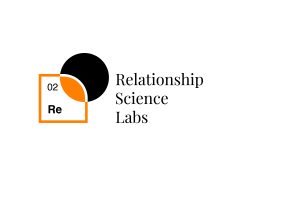When you think about love, what comes to mind? Perhaps your significant other, or maybe an everlasting bond that makes you feel complete.
If you’ve been lucky enough to feel this way in life, it’s all thanks to the hormone oxytocin. Commonly dubbed as the ‘love hormone’ (and rightly so), oxytocin is the secret ingredient that deepens your emotional bonds, enhances trust, and facilitates lasting emotional intimacy.
In this article, you will explore the role of oxytocin in romantic relationships and learn how to harness its benefits. Interested? Keep reading to enhance your love life.
Understanding oxytocin
First things first; What exactly is oxytocin? Is it some kind of magical ingredient that helps you fall in love?
Oxytocin is a hormone and neurotransmitter produced in the hypothalamus region of the brain and released by the pituitary gland.
Oxytocin works by binding with the hypothalamus and amygdala in the brain, two regions associated with processing and regulating emotions. It has two main functions: it helps in childbirth and breastfeeding due to its role in labor and milk ejection and facilitates social bonding and emotional regulation.
When you’re in a romantic relationship, oxytocin is released during physical touch, positive social interactions, and shared experiences.
This influences how you behave around your partner. Ever felt giddy around someone you love? Well, that’s just oxytocin at play. But how exactly does it influence your romantic relationships? Keep reading to find out.
Oxytocin’s role in romantic relationships
One of the primary needs for human survival is the need to feel wanted and loved. Without it, a person might feel demotivated or even unhappy. Therefore, the hormone oxytocin is crucial in romantic relationships by enhancing emotional bonds, fostering trust and security between partners, and facilitating emotional intimacy.
Enhancing emotional bonds
In romantic relationships, oxytocin levels surge during intimate moments, such as hugging, cuddling, or sexual activity. This hormone intensifies feelings of love and attachment between partners. This release of oxytocin also promotes a sense of safety and closeness and enhances emotional bonds between couples.
Building trust and security
Oxytocin increases trust in a relationship. It reduces fear and anxiety. It also helps partners establish reliability and dependability, two key elements of a stable and trusting relationship. Remember, though, that oxytocin doesn’t magically build trust and security. But it can boost feelings of love, security, and trust toward someone you already care for.
Facilitating emotional intimacy
Oxytocin creates a behavior loop. The more oxytocin is produced (through touch or physical affection), the more love you feel for your partner, making you desire them even more. This entire process facilitates emotional intimacy and makes you fall deeply in love.
Read more: Paul J. Zak: The Role of Oxytocin in Love | Sero Boost #52 – Insights
How to harness the power of the love hormone
Now that you know that oxytocin is a primary driver of romantic love and intimacy, you might wonder: is there a way to increase the production of this hormone? The answer is yes.
Here are all the tips and tricks for increasing oxytocin in your body and improving your relationships.
Physical touch
Oxytocin is released during direct physical touch. Simple acts such as hugging, holding hands, cuddling, or giving a massage can significantly increase oxytocin production. Experts say just a 20-second hug can ramp up production of oxytocin.
These small gestures of affection can have a big impact on how connected and loved you and your partner feel. Therefore, if you want to keep the love going, make it a habit to incorporate more physical touch into your daily routine.
Read more: Pauline Ryeland: How Physical Affection Strengthens Emotional Bonds | Reloscope #54 – Insights
Positive communication
Positive communication is a powerful tool for increasing oxytocin. Regularly expressing love, gratitude, and appreciation towards your partner can make you feel close to each other. It makes your partner feel wanted and seen, and even ensures security and emotional connection.
According to a study, compliments given to partners activate brain areas that are involved in empathy and reward processing. Practice active listening and empathy during conversations to create a positive communication environment that promotes oxytocin release.
Shared experiences
Think back to your school days. Remember how sharing lunch during break nestled into good friendships? This is because something small like food sharing can increase oxytocin levels in the body. Pretty amazing, isn’t it?
Positive shared experiences in relationships, such as cooking together, dancing, or traveling, can also boost oxytocin levels. These activities create lasting memories together and reinforce your emotional bond.
Supporting healthy oxytocin response
Maintaining a healthy lifestyle is integral for fostering a healthy oxytocin response.
It’s important to keep oxytocin levels balanced. This is only possible if you manage your stress, exercise, or practice mindfulness, and ensure you have a good night’s sleep.
Read more: From Zzz to Zen: Crafting a Balanced Life Through Better Sleep Habits
Most importantly, remember that you need to be emotionally available and supportive towards your partner. Nothing increases oxytocin more than being available to your partner.
In conclusion
Oxytocin, the love hormone, plays an important role in forming and nurturing our romantic relationships.
It affects how we fall in love and helps us develop emotional bonds — trust, security, and emotional intimacy, all of which are important for a healthy relationship. It’s time to take proactive steps to enhance its production and use it to the fullest.
Start integrating these tips into your daily life and watch as your relationship grows stronger and more connected.
If you would like to see more resources on the biology of romantic emotion, check out the Relationships Science Labs. The lab uses the research of the Institute for Life Management Science to produce courses, certifications, podcasts, videos, and other tools. Visit the Relationship Science Labs today.

Photo by mego-studio on Freepik


